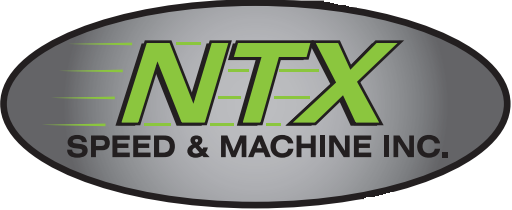In the image below cylinders do look really smooth and they actually are,
but just because they are smooth does not mean they will not seal.
The real factor of ring sealing is the oil that is contained within the cross
hatching in the cylinders and the oil on the surface of the rings. Since this
application is using chrome plated top ring and each one being low tension they
don't need a lot of oil like older types of piston rings.
Engines such as a traditional small block 350 mainly use cast rings that exert a lot more pressure on the cylinder need deeper cross hatching to hold more oil. Those deeper scratches directly relate to the RA (surface roughness) of the cylinder walls. And, with a higher RA the more matte the finish on the cylinder walls. But, keep in mind that the 350 can have finishes just like the one pictured above, but you have to use the rings that specify that RA (low tension, coated, and thin rings)
We often times build viper v10's with surface finishes in the 8-10 range that are "shiny", but since the rings call for it there is almost no blow by pressure.
Along with ring type there is still another factor that drives the surface finish, oil weight. A modern engine that uses RA values below 1.0 also call for zero weight oils. On those engines the cross hatching seems almost nonexistent, but under the microscope there actually are more scratches per square inch. With more scratches per inch they are able to produce much shallower scratches to accommodate the lighter weight oils used.
Examples of RA:
Glass: 2-4 RA
Surfaced aluminum cylinder head: 25-40 RA
Cylinder (honed-cast rings): 20-35 RA
Cylinder (moly low tension): 8-12
Cylinder (Really low tension Laser processed cylinder): <1.0 RA
Engines such as a traditional small block 350 mainly use cast rings that exert a lot more pressure on the cylinder need deeper cross hatching to hold more oil. Those deeper scratches directly relate to the RA (surface roughness) of the cylinder walls. And, with a higher RA the more matte the finish on the cylinder walls. But, keep in mind that the 350 can have finishes just like the one pictured above, but you have to use the rings that specify that RA (low tension, coated, and thin rings)
We often times build viper v10's with surface finishes in the 8-10 range that are "shiny", but since the rings call for it there is almost no blow by pressure.
Along with ring type there is still another factor that drives the surface finish, oil weight. A modern engine that uses RA values below 1.0 also call for zero weight oils. On those engines the cross hatching seems almost nonexistent, but under the microscope there actually are more scratches per square inch. With more scratches per inch they are able to produce much shallower scratches to accommodate the lighter weight oils used.
Examples of RA:
Glass: 2-4 RA
Surfaced aluminum cylinder head: 25-40 RA
Cylinder (honed-cast rings): 20-35 RA
Cylinder (moly low tension): 8-12
Cylinder (Really low tension Laser processed cylinder): <1.0 RA



